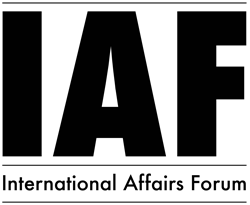| Thu. June 19, 2025 |
 |
|
||
|
||||
| ||||

Introduction
This paper explores the growing rift in the historically delicate relationship between Japan and South Korea, as well as the consequences of this development on the East Asian geopolitical climate more broadly. Although informal cultural ties between the two nations have warmed considerably since Japanese administration of the Korean Peninsula was brought to an abrupt end in 1945, the diplomatic relationship has been fraught with latent bitterness over these historical events - and has been driven, according to the majority of the available scholarship, more by the common geopolitical goal of containing the DPRK’s nuclear ambitions than any acknowledgement of shared culture or values. This point is underscored by the fact that Japan (characterised during this period by a fervent aversion to the principles of communism) took almost twelve years to formalize diplomatic relations with the newly independent ROK.
In recent years, protests in Seoul have taken place in response to the staunch reluctance of successive Japanese governments to acknowledge and apologize for wartime atrocities - including reliance on Korea as a source of both forced labor and “comfort women.”
However, 20th December saw the bilateral relationship sink to perhaps its lowest point in decades - with Tokyo issuing a statement claiming a South Korean destroyer locked its fire-control tracking radar on a low-flying Japanese P-1 aircraft multiple times. In turn, Seoul has asserted that the aircraft in question was flying dangerously low, posed an ostensible threat to the KD-I class frigate, and that the irradiation received by the aircraft was emitted as a legitimate function of the search and rescue operation the ship was conducting at the time.
This paper will provide a detailed analysis of the ensuing diplomatic confrontation - paying particular respect to the increasingly isolationist flavour of Japanese diplomatic rhetoric, in order to clarify the implications of this event for the continued stability of the Japanese-Korean relationship.
A conciliatory approach
While discourse on both sides has been, at times, tempered with references to “misunderstanding,” it should be noted that subsequent official communications from both quarters would seem to imply deliberate misconduct by the opposing party. In the initial press conference held by the Japanese Minister of Defense - Takeshi Iwaya - the Minister stated that irradiation of the P-1 aircraft had been determined to be characteristic of a type of missile-tracking radar known as STIR-180, rather than radar used more broadly for search operations. In doing so, however, the Minister stressed that Korean motives in doing so were unclear.[1] After the Korean government countered with the claim that the radar used to track the P-1 plane was indeed a function of the ship’s general surveillance capabilities (and moreover, was a type of radar known as MW08), both governments adopted a conciliatory approach to the dispute. From the 24th to the 28th of December, high-level Japanese military officials visited the Korean government in order to resolve the issue, and teleconferences were held between executives of the two defence authorities to discuss technical evidence which could point to the radar’s true signature.
Release of video footage
Merely one day after engaging in bilateral talks with Korea over the issue, Japan’s MoD released footage of the Japanese pilot repeatedly asking the Korean destroyer to cease tracking. Since this point, the diplomatic situation has deteriorated considerably. Although subsequent joint conferences have resolved certain ancillary aspects of the situation (including the Korean ship’s failure to respond as a result of radar miscommunication),[2] both parties have ultimately failed to reach an agreement on the primary issue of the nature of radar-tracking used. At a conference held in Singapore, both parties have cited operational intelligence considerations in refusing to reveal key radar history from both vessels that might clarify the issue, while the issue as to whether the range within which the P-1 aircraft flew was acceptable can only be made with respect to the politically flexible concept of norms of international navigation.
Japan - a bona fide negotiator?
While for the moment, it may remain politically unfeasible to definitively resolve the radar-tracking issue, it is immediately apparent to an impartial observer that it remains open to Japan to suggest a legitimate reason for conducting such a low-altitude flyover operation over a friendly destroyer. Even if one cannot be (for whatever operational reason) put forth, this observation should be properly coupled with an appreciation of the events of January 23rd; in which a Japanese patrol aircraft once again flew low over a South Korean military vessel situated off Socotra Rock (an area of disputed between China and Korea, but not Japan). Although the respective altitudes, unsurprisingly, were once again debated (with the official Korean position being 70m, and the Japanese stating that the civil aviation guideline of 150m was observed) it seems clear that if the Japanese government wishes to appear as a legitimate party to the negotiation proceedings, this action seriously undermines the country’s position.
Implications
Although, as yet, Japan has not advanced any explanation of the Socotra passover, the statement subsequently issued by Korean Minister of National Defense Jeong Kyeong-doo reaffirms the gravity of the situation for the already fragile relationship. In stating that Korea will not hesitate to respond “according to domestic law” to any future provocative act, some commentators have suggested this implies the use of military force.
Going forward, the implications for Japanese military navigation exercises should be apparently clear. Although arguably legitimate under freedom-of-navigation law, the immediate benefits of mending the fractured diplomatic relationship with its neighbour can only objectively outweigh the supposed political gains of being seen to take an increasingly nationalistic stance on the international stage. The latter interpretation, interestingly, would accord with Japan’s flouting of a 2014 ICJ ruling upholding the 1986 moratorium on commercial whaling - a response which eroded the traditionally strong Australian-Japanese diplomatic alliance - and one which left commercial analysts scratching their heads due to a significant drop in the domestic demand for whale-meat.[3] More politically-savvy commentators (including Kanako Takahara, of the Japan Times[4]) have suggested the resistance to international pressure to cease whaling operations is likely attributable to appeasing nationalist tendencies at home, rather than for any legitimate commercial reason.
With a nuclear DPRK now lying across the Sea of Japan, this author would contend that the Abe government can no longer afford to refuse to make diplomatic concessions on the basis of isolationist policy. While other key decision-makers within his government seemed to be acutely aware of the ramifications of further alienating their democratic Korean neighbours by releasing the footage of the P-1 incident, the adversarial trend shown by Japanese leadership threatens to further isolate Japan from her neighbors. Although time will tell whether the South Korean government will account for and look to appease these features of a decidedly patriotic Japanese administration, those comments issued by Kyeong-doo in the wake of the Socotra passover seem to suggest that Seoul is equally unwilling to lose face on the international stage.
Sandy Milne is an LLB graduate of Curtin University (Western Australia) and published scholar currently teaching in Tokyo, Japan. The bulk of his circulated works focus on the role of various state and non-state actors in the context of international sovereignty disputes.
[1] "Press Release: Regarding the incident of an ROK naval vessel directing its fire-control radar at an MSDF patrol aircraft". www.mod.go.jp. Japan Ministry of Defense. 2018-12-21. Retrieved 2019-01-31.
[2] Ibid.
[3] A Survey of the Commercial Trade in Whale Meat Products, Akiko Ishihara & Junichi Yoshii, TRAFFIC East Asia-Japan June 2000.
[4] ‘Whaling — for nationalism or science?’ Kanako Takahara, The Japan Times, Dec 25 2007.
| Comments in Chronological order (1 total comments) | |
| Report Abuse |
|
|
|
I like the helpful info you provide in your articles. I'll bookmark your blog and check again here regularly. I'm quite certain I will learn many n |
|
| Contact Us | About Us | Donate | Terms & Conditions |
|
All Rights Reserved. Copyright 2002 - 2025